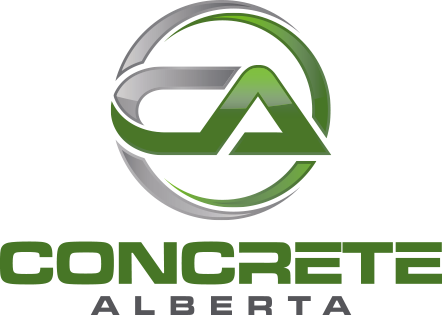LEED
Leadership in Energy and Environmental Design (LEED) is a point-based rating system that is internationally recognized in over 160 countries for green building practices. The Canada Green Building Council (CaGBC) and LEED Canada work together to facilitate sustainability in building practices.
A building requires a minimum of 26 LEED points for certification. The more sustainable products that are used to manufacture a building, the more points are earned. Silver, gold, and platinum certifications are also available for those who demonstrate exceptional building sustainability on their project.
Why Choose Concrete?
The use of concrete can help facilitate LEED Green Building certification in different ways. Various concrete mixes for a variety of functions qualify under Environmental Product Declaration (EPD) standards, earning a building points with each one used.
Key LEED Credits
Below are the main categories builders can comply with to earn LEED credits, and the total number of points available for each.
- Sustainable Sites: 14 points
- Water Efficiency: 5 points
- Energy & Atmosphere: 17 points
- Materials & Resources: 14 points
- Indoor Environmental Quality: 15 points
- Innovation & Design Process: 5 points
Cement & Concrete for LEED Credit
Redevelopment of Contaminated Sites: 1 point
Sustainable Sites, Credit 3
- Cement can be used to solidify and stabilize contaminated soil to reduce leaching
- To qualify, proof of contamination must exist
Reduced Site Disturbance (Protect/Restore Open Space): 1 point
Sustainable Sites, Credit 5.1
- Build parking space under the building in lieu of using external space
- Reduce need for clearing vegetation to accommodate parking
- Limit site disturbance to 12m beyond building perimeter
Reduced Site Disturbance (Development Footprint): 1 point
Sustainable Sites, Credit 5.2
- Build parking space under the building in lieu of using external space
- Reduce need for external paving to accommodate parking
- Exceed local zoning open space requirements by 25%
Stormwater Management (Rate & Quantity): 1 point
Sustainable Sites, Credit 6.1
- Limit disruption and pollution of natural water flow
- Can be achieved using highly-permeable pervious concrete
- On sites with >50% imperviousness, reduce quantity of stormwater runoff by 25%
- On sites with <50% imperviousness, building must maintain or lessen stormwater runoff
Heat Island Effect (Non-Roof): 1 point
Sustainable Sites, Credit 7.1
- Use light-coloured or reflective exterior building materials for 30% of structure (not including roof)
- Concrete made with Portland cement, rather than asphalt can help to meet the requirement
- Another option is to place 50% of parking spaces underground
Minimum Energy Performance: Required (no points associated)
Energy & Atmosphere Prerequisite, Credit 2
- Demonstrate energy savings using a whole building energy simulation system
Optimize Energy Performance: Number of points varies
Energy, Credit 1
- Credit is allowed if energy cost savings can be shown compared to a base building
- Base must meet MNECB or ANSI/ASHRAE/IESNNA 90.1-1999 requirements
- Insulated concrete will most likely be eligible for points
Building Reuse: Number of points varies from 1 to 3
Materials, Credit 1
- Credit requires main portion of building to remain in place while renovating
- 75% of building left in place: 1 point
- 95% of building left in place: 2 points
- 50% of non-shell areas maintained: 3 points
Construction Waste Management: Number of points varies from 1 to 2
Materials, Credit 2
- Diverting construction/demolition/land waste from landfills
- Must divert 50% weight by volume
- Concrete is relatively heavy and can be crushed and recycled
- 50% of waste recycled or salvaged: 1 point
- 75% of waste recycled or salvaged: 2 points
- Important note: for concrete, just one of the “building reuse” or “construction waste management” credits can be applied for
Recycled Content: Number of points varies from 1 to 2
Materials, Credit 4
- This credit can be applied for if a certain composition of the building is made using post-consumer goods
- Sum of post-consumer recycled content plus ½ the post-industrial recycled content constitutes >7.5% of the materials’ value: 1 point
- Sum of post-consumer recycled content plus ½ the post-industrial recycled content constitutes >15% of the materials’ value: 2 points
- Using recycled concrete or slag as aggregate instead of extracted aggregates would qualify as post-consumer
Regional Content: Number of points varies from 1 to 2
Materials, Credit 5
- Supports the use of indigenous materials and reduced product transportation
- Credit recognizes the reduced impacts of rail or ship compared to truck
- Sourcing concrete mixes from local suppliers can help achieve this credit as many suppliers also source mix components locally as well
- Meeting all requirements: 1 point
- Surpassing requirements by 100%: 2 points
Durable Building: 1 point
Materials, Credit 8
- Incentive for durable buildings, recognizing resources required to replace materials with a short service life
- Concrete boasts an extreme longevity and can help in achieving this credit
Additional details on LEED and its parameters and certification processes can be found on the Canada Green Building Council (CaGBC) website.
